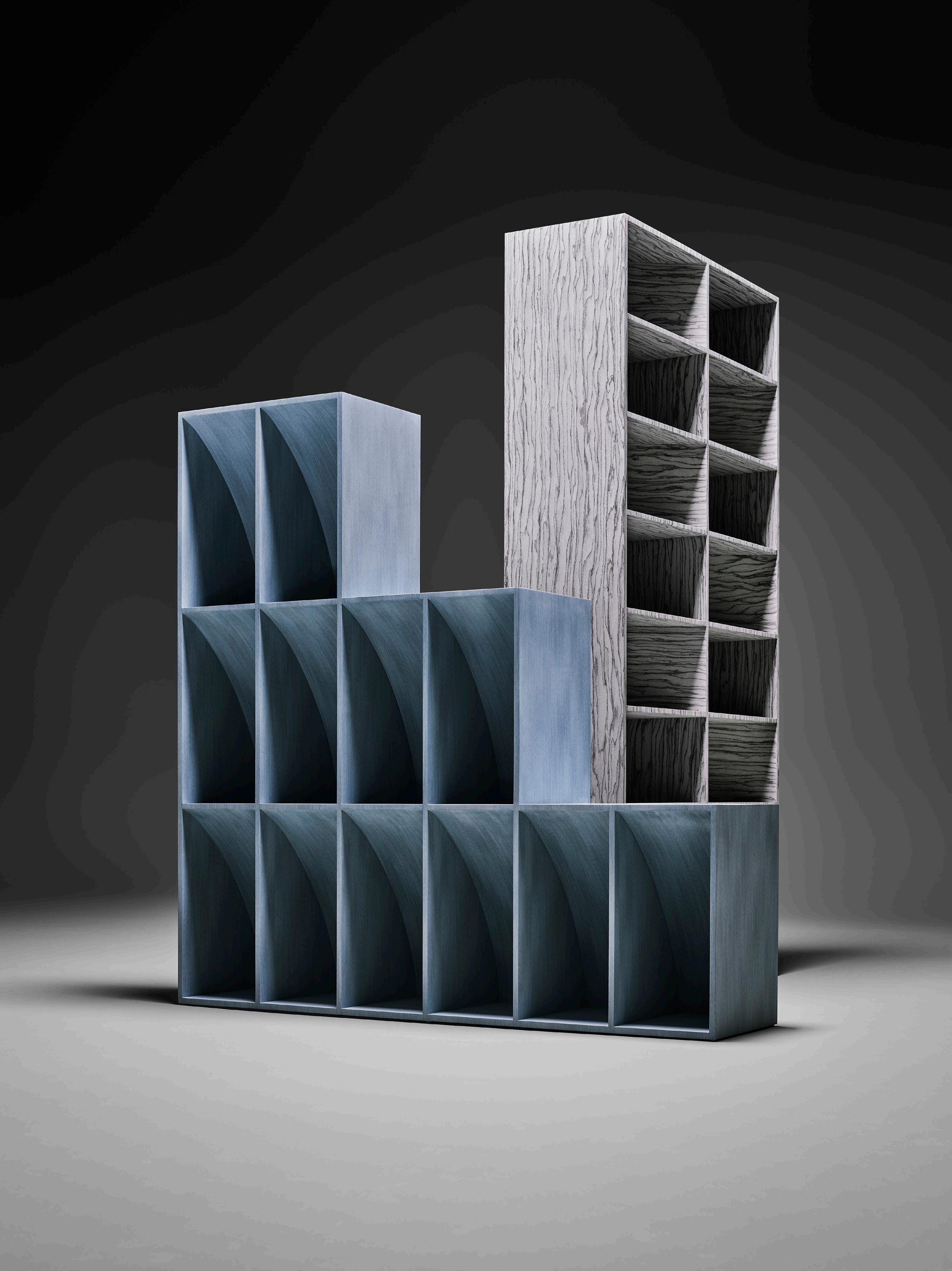
4 minute read
In Conversation | Japanese Designer Oki Sato
PRODUCT PHOTOGRAPHY Federico Cedrone INSTALLATION PHOTOGRAPHY Thomas Pagani PORTRAIT Courtesy of nendo INTERVIEW Megan Rawson
In collaboration with Italian timber surface innovators ALPI, Japanese design studio nendo— led by Oki Sato—explores the boundary between nature and crafted through two wood surfaces: Kasumi and Futae. Oki Sato reflects on the challenge of designing wood that feels familiar yet unexpected, the poetic potential of ALPI’s veneer process, and how subtle storytelling lies at the heart of nendo’s practice.
Produced in partnership with Elton Group.
Kasumi and Futae explore the boundary between natural and man-made—what drew you to this idea, and how did it shape the design process?
Oki Sato: The brief from ALPI was precisely to explore the boundary between the natural and the man-made. If the design became too deliberate, it risked looking like a printed graphic, failing to communicate ALPI's technical expertise. Conversely, if it mimicked natural wood grain too closely, it would be indistinguishable from conventional veneer. The challenge was to find a design that balanced precisely between these two extremes.
ALPI’s unique veneer layering and slicing technique offers a lot of creative freedom. How did you approach working with such an innovative material process?
Oki Sato: Designing the material itself was a novel yet complex challenge. In the initial stages, we ran numerous digital simulations using 3D modeling. However, the actual prototypes often yielded results different from our digital predictions. Consequently, the latter part of the process involved intensely iterating through prototypes and dialogue to refine the design. Discovering unexpected expressions emerge through this process—ones not originally intended—was both surprising and deeply rewarding.

Kasumi’s soft, blurred grain and Futae’s rugged, bark-like texture each tell a different story. What kind of feeling did you hope to evoke through these contrasting designs?
Oki Sato: For Kasumi, the aim was a subtle, delicate expression. From a distance, it resembles the uneven texture of plaster more than typical wood grain. Upon closer inspection, however, one realises it is indeed genuine wood, composed of extremely fine, randomly arranged grains. Futae, in contrast, features wood grains of varying scales, large and small, allowing us to emphasise the inherent boldness and strength of wood. In a way, these two designs could be said to evoke contrasting feelings in the observer.
The subtle use of both warm and cool tones adds depth to the veneer sheets—how did colour influence your interpretation of natural elements?
Oki Sato: ALPI's veneers are versatile, used for everything from small furniture pieces to large-scale applications like architectural fittings and wall surfaces. Considering this wide range of potential uses, we chose a restrained colour palette that doesn't stray far from the impression of natural wood, ensuring adaptability across diverse settings.

The shelving is intentionally minimal, yet the form draws attention to the finish—how important was it for the furniture to act as a kind of frame for the material?
Oki Sato: That's precisely the intention. Despite the minimal concept, the curved surfaces, oriented in various directions, were consciously designed to highlight the appeal of the wood grain. I find ALPI's ongoing approach very interesting for a material manufacturer: inviting designers not just to create materials, but to reinterpret them through objects, thereby enhancing the material's allure and revealing new facets.
Your work often blurs the line between functional design and poetic expression. How does this collaboration with ALPI continue that exploration?
Oki Sato: In this context, I perceive 'function' as achieving a balance where the material integrates seamlessly into various spaces while maintaining a subtle design presence. The 'poetic' element lies in another delicate balance: being derived from natural materials, yet possessing patterns that don't exist in nature. This approach to creation—navigating the ambiguous space between function and emotion with a distinct sense of balance—is perhaps characteristic of nendo.
Finally, how does this project reflect your broader philosophy at nendo—of designing moments of quiet surprise and subtle storytelling?
Oki Sato: It might not be apparent at first glance. But that sudden moment of realisation—the '!'—when one notices it's 'designed wood,' coupled with the surprise of understanding the technology behind its creation. I feel this experience is unmistakably representative of the kind of expression nendo aims for.
Explore the ALPI range at Elton Group.


